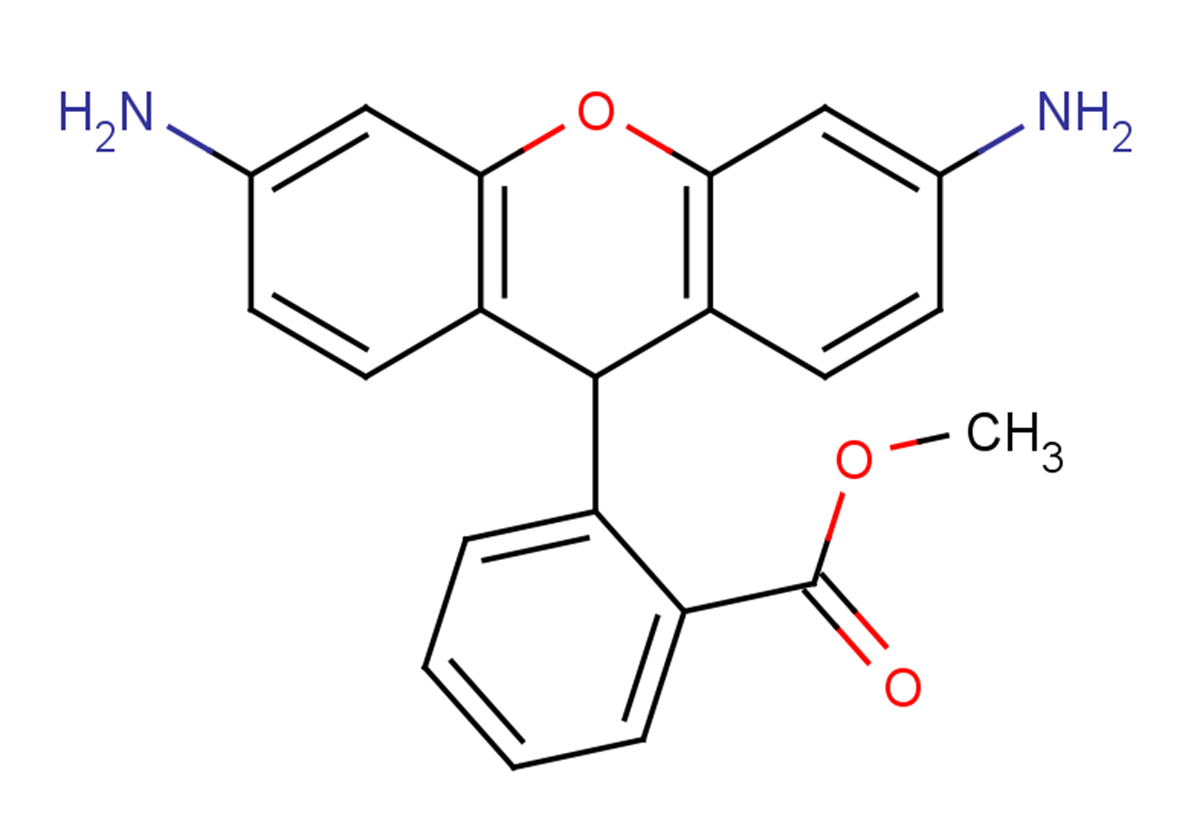
Dihydrorhodamine 123
CAS No. 109244-58-8
Dihydrorhodamine 123( DHR 123 )
Catalog No. M23294 CAS No. 109244-58-8
Dihydrorhodamine 123 is a fluorescent probe.
Purity : >98% (HPLC)
 COA
COA
 Datasheet
Datasheet
 HNMR
HNMR
 HPLC
HPLC
 MSDS
MSDS
 Handing Instructions
Handing Instructions
| Size | Price / USD | Stock | Quantity |
| 5MG | 86 | In Stock |


|
| 10MG | 129 | In Stock |


|
| 25MG | 214 | In Stock |


|
| 50MG | 322 | In Stock |


|
| 100MG | Get Quote | In Stock |


|
| 200MG | Get Quote | In Stock |


|
| 500MG | Get Quote | In Stock |


|
| 1G | Get Quote | In Stock |


|
Biological Information
-
Product NameDihydrorhodamine 123
-
NoteResearch use only, not for human use.
-
Brief DescriptionDihydrorhodamine 123 is a fluorescent probe.
-
DescriptionDihydrorhodamine 123 is a fluorescent probe (λex=488 nm, λem=525 nm).
-
In VitroIn the presence of 10 μM Dihydrorhodamine 123 (DHR 123) the stimulation of the neutrophil NADPH oxidase by the addition of 50 nM phorbol 12-myristate 13-acetat (PMA) resultes in an increase in the rate of rhodamine generation. The fluorescent intensity of the cells, in the presence of 10 μM Dihydrorhodamine 123, increases with time following the addition of 50 nM PMA. In the presence of 10 μM Dihydrorhodamine 123, induced HL60 cells show a sustained increase in fluorescence following the addition of 50 nM PMA.
-
In Vivo——
-
SynonymsDHR 123
-
PathwayOthers
-
TargetOther Targets
-
RecptorOthers
-
Research Area——
-
Indication——
Chemical Information
-
CAS Number109244-58-8
-
Formula Weight346.38
-
Molecular FormulaC21H18N2O3
-
Purity>98% (HPLC)
-
SolubilityDMSO: 95 mg/mL (274.27 mM; Need ultrasonic)
-
SMILESO=C(OC)C1=CC=CC=C1C2C3=C(OC4=C2C=CC(N)=C4)C=C(N)C=C3
-
Chemical Name——
Shipping & Storage Information
-
Storage(-20℃)
-
ShippingWith Ice Pack
-
Stability≥ 2 years
Reference
1.Lydia M. Henderson et al. Dihydrorhodamine 123: a fluorescent probe for superoxide generation? Eur.J.Biochem. 217, 973-980.
molnova catalog



related products
-
Ranatensin R
Ranatensin R
-
Thalidomide-O-amido-...
Thalidomide-O-amido-C4-NH2 TFA is a synthesized E3 ligase ligand-linker conjugate.
-
2-Octanol
Octan-2-ol is involved in the production of nanomaterials and liquid crystal materials.



 Cart
Cart
 sales@molnova.com
sales@molnova.com


